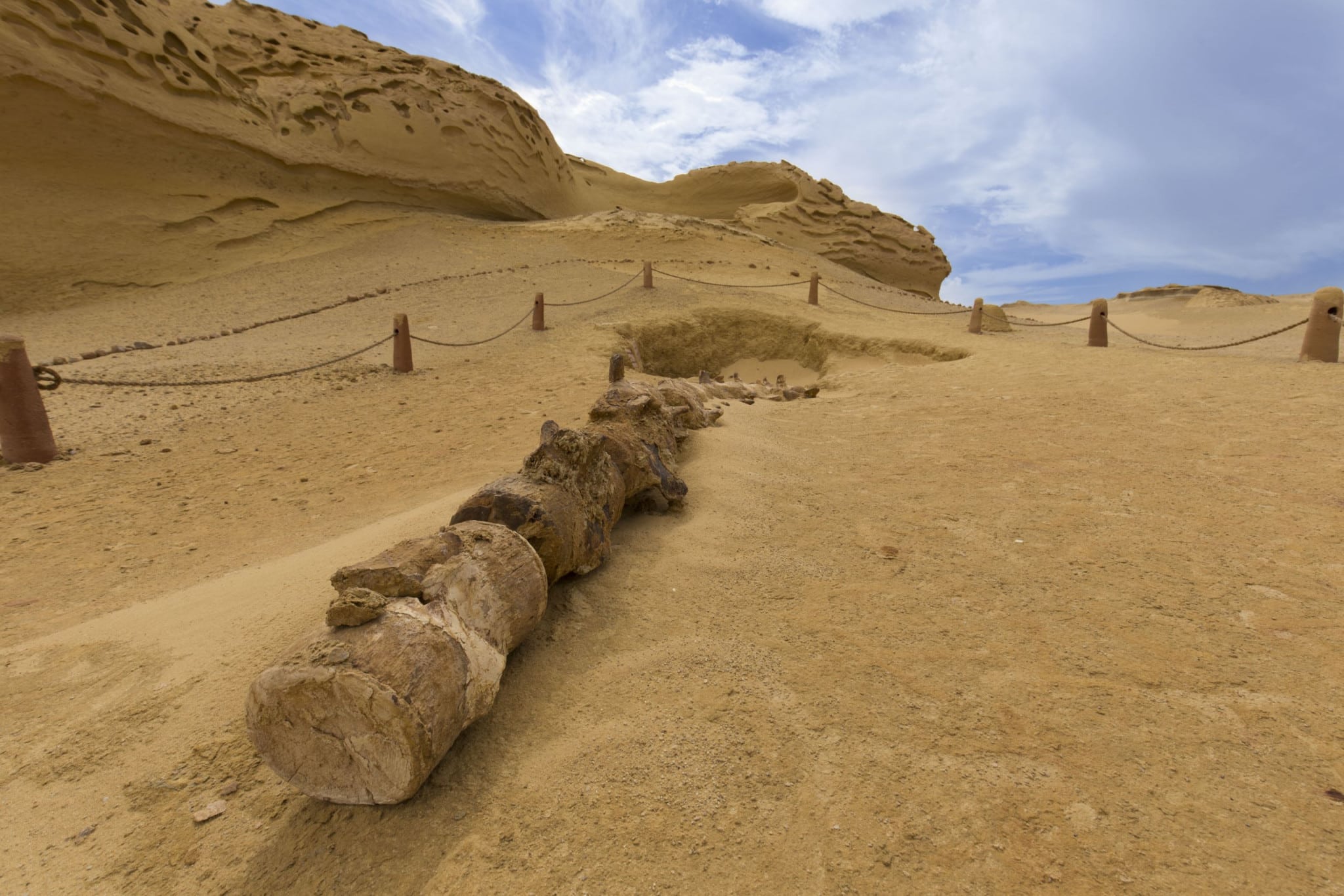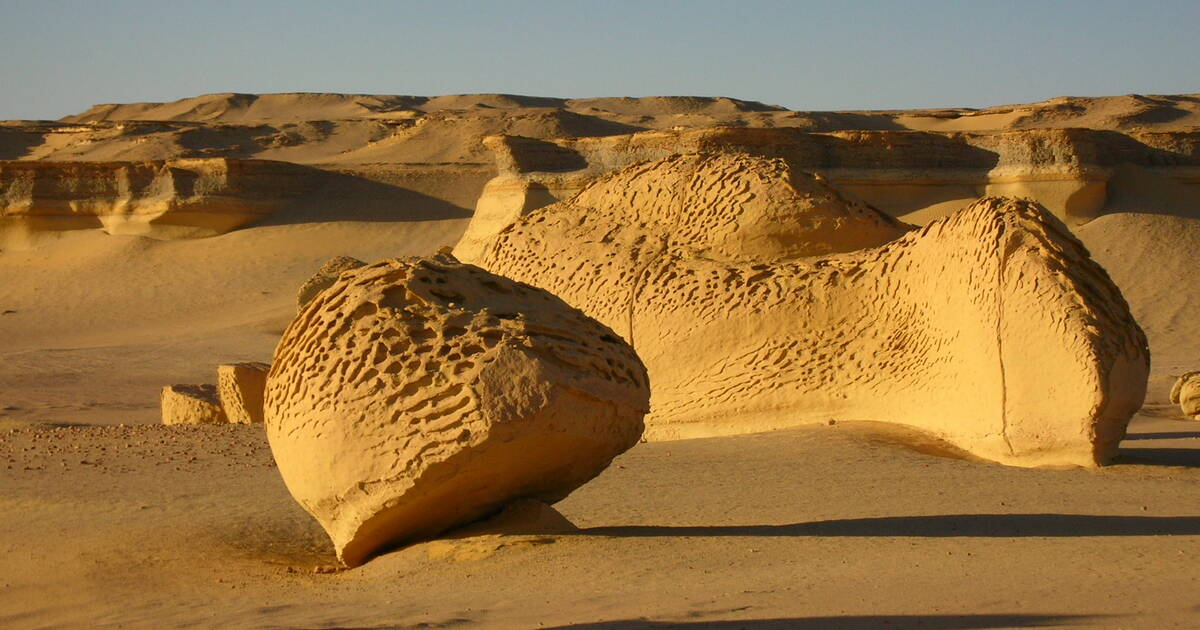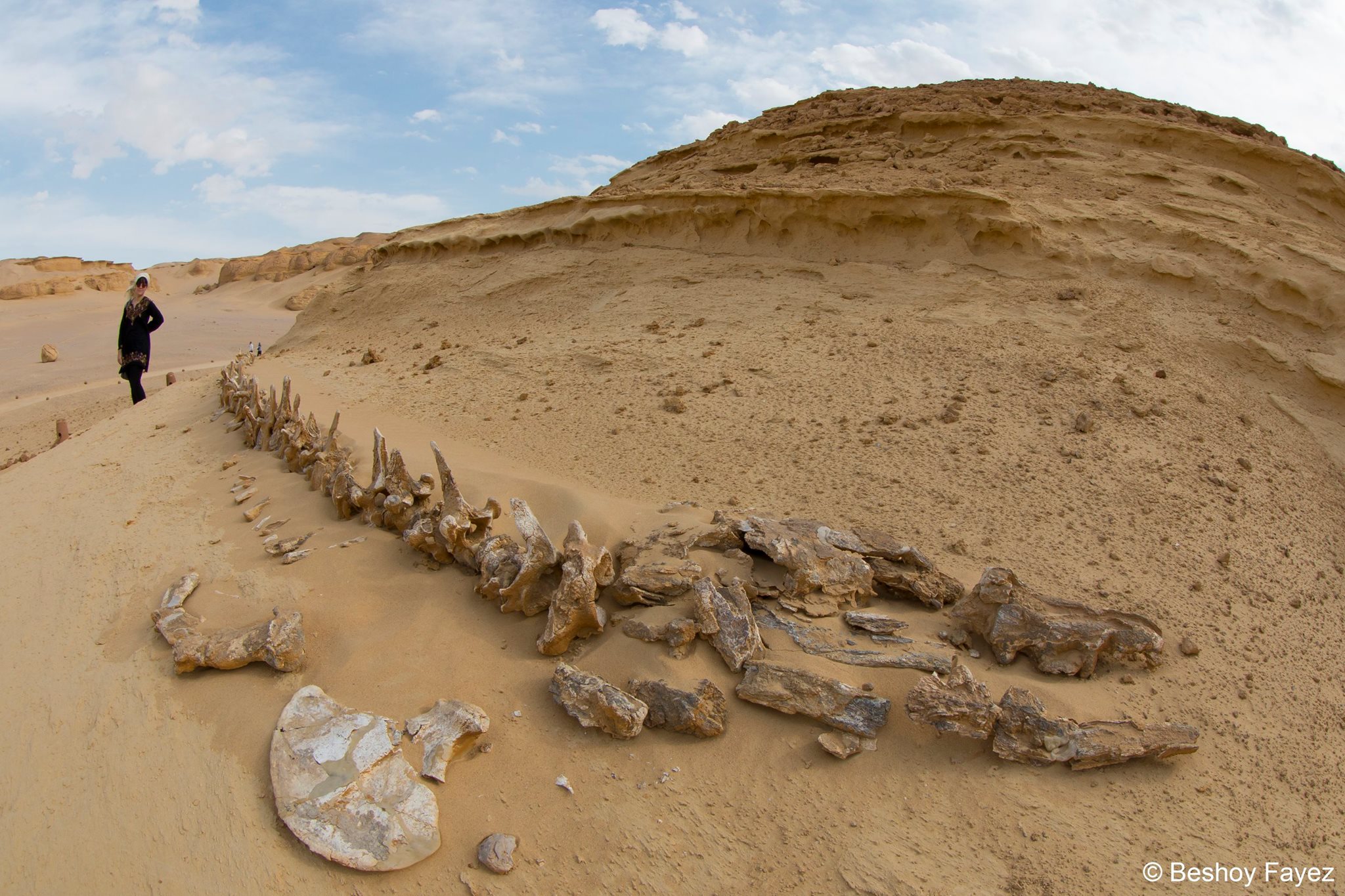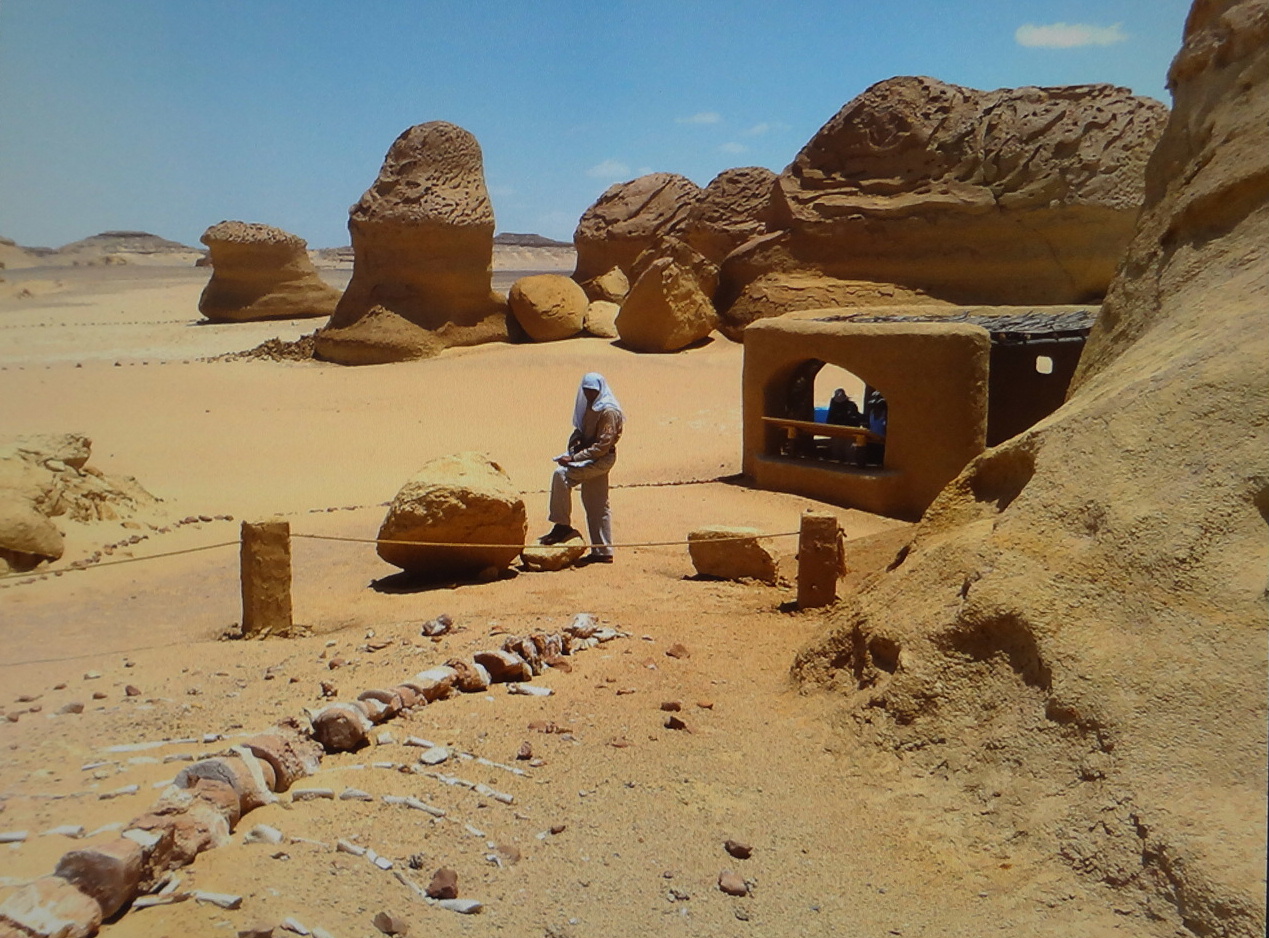
Wadi AlHitan Monument valley, Natural landmarks, Egypt
The world's only intact fossil of an early whale - the Basilosaurus dating about 40 million years ago - has been uncovered during a new excavation at Wadi Al-Hitan, a natural World Heritage site in Egypt. The discovery reveals for the first time the creature's complete skeleton and includes fossilised remains of other sea creatures inside its stomach.

A walk through history at Wadi AlHitan Whale Valley Chris Travel Blog
Wadi Al-Hitan - also known as Whale Valley - is located in the Western Desert of Egypt. It is an 'open-air museum' of invaluable fossil remains of the earliest, and now extinct, suborder of whales (Archaeoceti), as well as other prehistoric fossil remains and diverse living wildlife.

Wadi AlHitan (Whale Valley) UNESCO World Heritage Centre
Wadi al-Hitan, la Vallée des baleines, dans le désert occidental de l'Égypte, contient des restes fossiles inestimables du plus ancien, et maintenant éteint, ordre des baleines archaeoceti.

Wadi El Hitan National Protectorate in Egypt Egypt Fun Tours
Wādī al-Ḥītān is the most important site in the world to demonstrate one of the iconic changes that make up the record of life on Earth: the evolution of the whales. It portrays vividly their form and mode of life during their transition from land animals to a marine existence.

An Ultimate Guide To Wadi alHitan Vanilla Papers
Wadi Al Hitan which is located in the Fayoum Oasis, is often referred to as the Valley of Whales, and for very good reason. There are many reasons why someone would choose to visit this valley, and since it is only about 150 km to the south of Cairo, it is easily reachable. Design Your Custom Tour

FileWind erosion in Wadi AlHitan.jpg Wikimedia Commons
Wadi Al-Hitan is State owned and has strong and unequivocal legal protection under the Egyptian Law 102/1983 for Nature Protectorates reserves, forbidding actions that would lead to destruction or deterioration of the natural environment. The law mentions geological features as specific elements receiving protection.

Wadi alHitan dolina Waleni National Geographic
The site complex has toilets, a wilderness campground and the excellent Wadi Al Hittan Fossil & Climate Change Museum. The circular one-room museum does a good job of explaining the geological history and nature of the area with a series of information boards and fossil displays that surround the crowning exhibit, an 18-metre long skeleton of a Basilosaurus Isis whale.

Wadi alHitan's wideopen spaces — through a superwide lens Egypt
Wadi al-Hitan (Valley of the Whales) Ibsheway, Egypt Egyptian treasure trove of fossils documenting the whale's transition from land mammal to sea creature. Been Here? 42 Want to Visit? 372 A.

Wadi El Hitan Revive Mysteries Of The World From 40 Million Years
Wadi Al-Hitan Photo by Els Slots. Wadi Al-Hitan (Whale Valley) is the largest and most important site in the world for whale fossils. These fossils belong to a now-extinct subspecies of whales, which show their transition from land animals to marine mammals: they still have hind legs.

A walk through history at Wadi AlHitan Whale Valley Chris Travel Blog
Wadi al-Hitan Museum. Or the Wadi Al-Hitan museum of fossils and climate change. Cooperation between the United Nation Development Programme, the Government of Egypt, and the Government of Italy resulted in the establishment of Wadi al-Hitan Museum. In fact, there are two museums. The first is an open museum, a large site in the desert where.

Wadi elHitan (Valley of Whales), Sahara, Egypt Virily
Wadi El-Hitan (Valley of Whales), located within Wadi El-Rayan Protected Area, was designated in 2005 by UNESCO as the first Egyptian Natural World Heritage Site, for its contents of the 40-million-year-old whale skeletons, which is recording the story of whales' evolution (from land to ocean-based animals).

Wadi Al Hitan day trip from Cairo El Gouna Tours
Values: Wadi Al-Hitan, Whale Valley, in the Western Desert of Egypt, contains invaluable fossil remains of the earliest, and now extinct, suborder of whales, Archaeoceti. These fossils represent one of the major stories of evolution: the emergence of the whale as an ocean-going mammal from a previous life as a land-based animal, about 37 million years ago.

A walk through history at Wadi AlHitan Whale Valley Chris Travel Blog
A collection of whale fossils - with hind legs. Dating back 40 to 50 million years, Wadi al-Hitan is a paleontological miracle-find; although not the oldest site worldwide, it presents an interesting subset of questions that have yet to be answered—rather, it introduces more questions than answers, period.

Day Trip to Wadi Al Hitan whales valley from Cairo Travel to Egypt
IUCN Green List Wadi Al-Hitan - IUCN Green List Attributes Site Summary EAGL Evaluation Summary Links Site Attributes WDPA ID 902487 Size 200.15km 2 Designation (s) World Heritage Site (natural or mixed) IUCN Category II Year Established 2005 Marine Protected Area No Governance Type Government-delegated management Site Manager Mohamed Sameh

Day trip to Fayoum and Wadi Hitan (Whales Valley) Deluxe Tours Egypt
Wadi al-Hitan is a must-see place, with a nice little museum and ancient whale skeletons amid beautiful rocky/desert landscapes. We also visited artificial waterfalls at Wadi al-Rayan and a few scenic spots (including Magic Lake). Our guide Raafat was super helpful and pleasant and gave us plenty of time to explore all the places at our own pace.

Sand in the Sahara Desert
Wadi Al-Hitan is the only place in the world where numerous archaeocete skeletons can be seen in place in their original geological and geographic setting. In addition the off-site occurrence in the Gebel Qatrani formation north of the property has been called 'the most complete record of palaeogene mammals for all Africa' (Wells, 1996).
